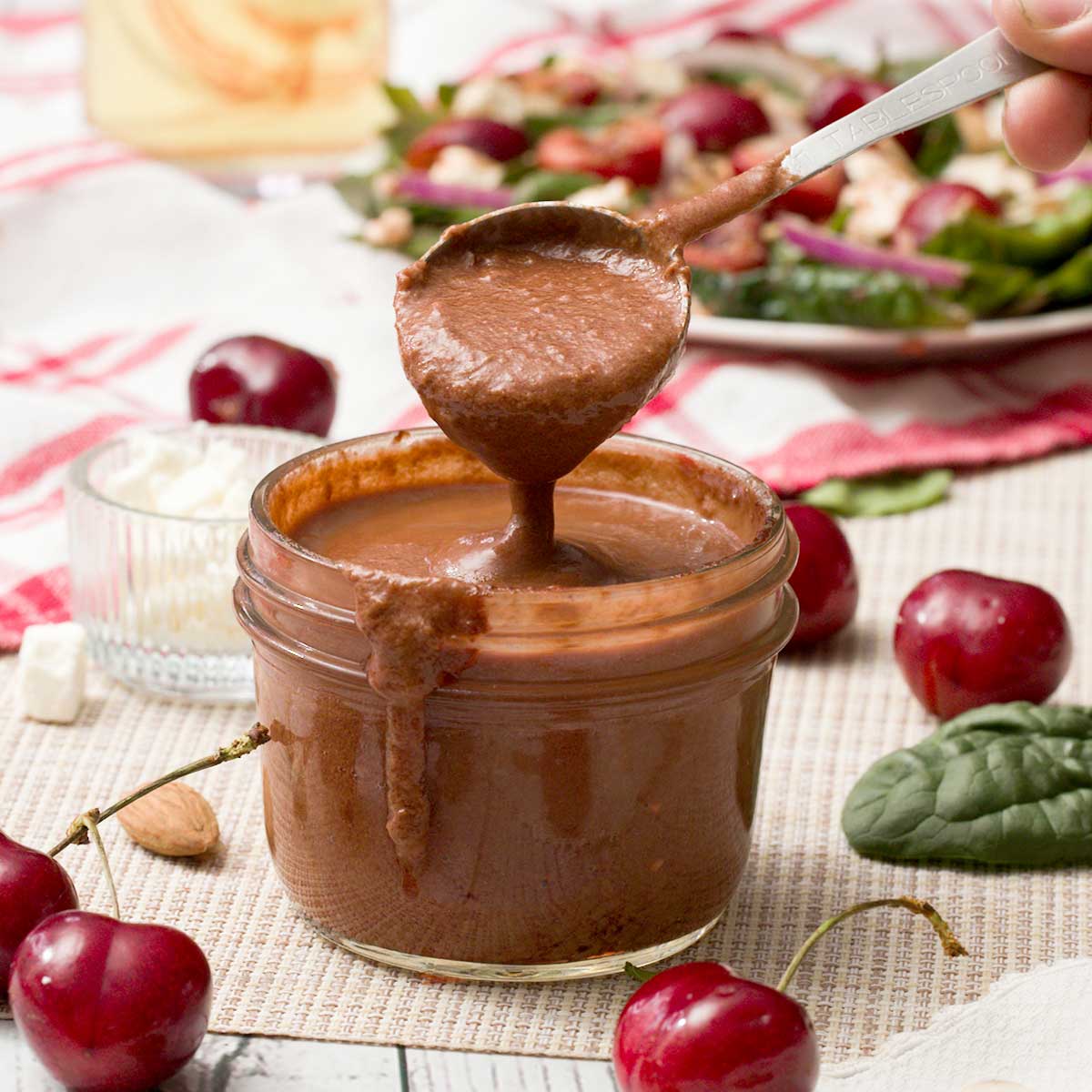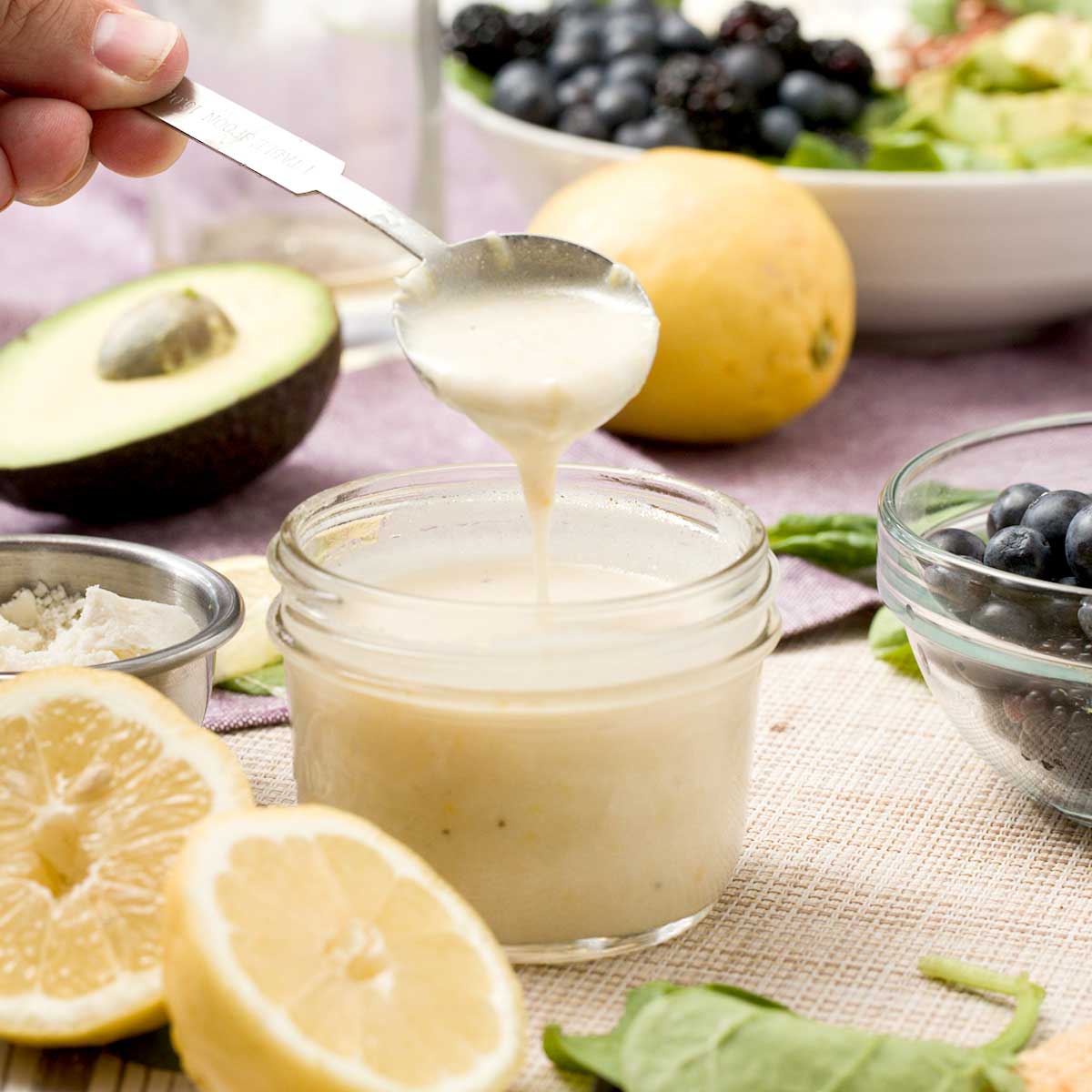5-Minute Pesto Sauce without Pine Nuts with Almonds
This 5-minute almond pesto delivers all the bright, aromatic flavors of traditional basil pesto without expensive pine nuts. Fresh basil leaves, toasted almonds, and aged parmesan create a versatile sauce perfect for pasta, sandwiches, or as a flavor-boosting ingredient in dressings – all while being budget-friendly and simple to prepare.

Want a fresh, vibrant pesto that doesn’t require expensive pine nuts? This almond pesto sauce delivers incredible flavor with budget-friendly ingredients in just 5 minutes. The bright, aromatic blend of fresh basil leaves, almonds, and parmesan creates a versatile sauce that elevates everything from pasta to salads. I’ve been making this almond version for years instead of traditional pesto recipes, and my husband (who was initially skeptical) now requests it weekly!
What makes this recipe special is the touch of lemon juice that wakes up all the flavors without overwhelming the delicate basil. You only need 3 ounces of basil rather than an entire expensive bunch, making this an economical option that doesn’t sacrifice flavor compared to store-bought versions.
Why You’ll Love This Pesto Sauce without Pine Nuts Recipe
- Quick and budget-friendly: Save money by using almonds instead of traditional pine nuts while maintaining authentic flavor.
- Perfectly balanced flavor: The touch of lemon juice brightens the sauce and enhances the basil’s natural aroma.
- Incredibly versatile: Use it on pasta, as a spread, mixed into salad dressings, or dolloped onto proteins.
- Freezer-friendly: Make a batch and freeze in ice cube trays for instant flavor boosters any time.

Ingredients & Substitutions
Here is everything you need to make pesto sauce without pine nuts:
Fresh Basil Leaves: The star ingredient that gives pesto its distinctive flavor and vibrant green color. You can substitute with half fresh spinach and half basil if you’re short on fresh herbs, or try other leafy greens like cilantro or fresh parsley for a different flavor profile.
Almonds: These provide a creamy texture and nutty flavor while being more affordable than traditional pine nuts. You can swap with walnuts, macadamia nuts, sunflower seeds, or pumpkin seeds if you prefer. For those with nut allergies, seeds make a perfect nut-free option.
Extra Virgin Olive Oil: Helps blend everything into a smooth sauce while adding a mild flavor. Canola oil or avocado oil work well as alternatives.
Fresh Parmesan Cheese: Adds a salty, umami depth to the pesto. Pecorino Romano or Parmigiano Reggiano make excellent substitutes, or nutritional yeast for a dairy-free pesto with a similar cheesy flavor.
Garlic: Fresh garlic cloves provide essential aromatic punch to the pesto. Roasted garlic can be used for a sweeter, milder flavor.
Lemon Juice: Brightens all the flavors and helps preserve the pesto’s vibrant green color. Add some lemon zest for extra citrus notes.
Salt and Black Pepper: Enhances all the flavors. Kosher salt works best, but table salt is fine (just use a bit less).
Easily Adapt This Recipe for Any Diet
This recipe is naturally easy to tweak! Follow these simple swaps to make it gluten-free, dairy-free, or vegan while keeping the same great texture and flavor.
Gluten-Free: The recipe is naturally gluten-free as written – just double-check your parmesan cheese for hidden gluten.
Dairy-Free: Replace the parmesan cheese with nutritional yeast or a dairy-free parmesan alternative for a delicious dairy-free pesto.
Vegan: Use nutritional yeast instead of parmesan cheese for a completely plant-based vegan pesto sauce with all the same great flavor.
💡 Pro Tip: If you try a substitution, let us know how it worked in the comments!

How to Make My Pesto Sauce without Pine Nuts Recipe
Here are easy, detailed, step-by-step instructions that are also repeated in the recipe card at the bottom of this post.
Step 1: Prep the Ingredients
Wash fresh basil leaves and pat them dry thoroughly. Measure out 3 ounces (about 2 cups packed).
Peel fresh garlic cloves and measure remaining simple ingredients.
Step 2: Blend Everything
Add all ingredients to the bowl of a food processor: 2/3 cup light olive oil, 3 ounces fresh basil leaves, 1/3 cup almonds, 2 fresh garlic cloves, 1/2 cup grated parmesan, 1/2 teaspoon salt, 2 teaspoons lemon juice, and a dash of black pepper.
Pulse several times until coarsely chopped, then process until smooth, about 1 minute. Scrape down the sides of the bowl as needed.



Expert Recipe Tips
Toast the almonds first: For deeper nutty flavor, lightly toast almonds in a dry skillet until fragrant before blending into the pesto.
Blanch the basil: For a vibrant green pesto that stays bright longer, blanch fresh basil leaves for 5-10 seconds in hot water, then immediately transfer to ice water before drying and blending.
Add ingredients in the right order: Put garlic and almonds in the food processor first to chop them finely before adding the more delicate basil.
Chill briefly before serving: Letting the pesto rest in the refrigerator for 30 minutes allows the flavors to meld together beautifully.
Don’t over-process: Blend just until smooth to maintain some texture and prevent the basil from becoming bitter.
Delicious Serving Suggestions
- Tossed with pasta: My favorite way to enjoy this delicious homemade pesto is to mix a few tablespoons with freshly cooked hot pasta and a splash of pasta water. You’ll love it because the heat from the pasta brings out all the aromatic qualities of the basil and garlic.
- Spread on sandwiches: Use as a flavorful spread on Italian-style sandwiches or wraps. This adds incredible depth of flavor compared to mayo or mustard alone.
- Mixed with mayo or Greek yogurt: I often mix a spoonful with mayo or Greek yogurt for an elevated dip or dressing. You’ll love how it transforms ordinary condiments into something special.
- Dolloped on grilled meats: Add a spoonful to hot grilled chicken, fish, or steak just before serving. The heat slightly melts the pesto, creating a fragrant delicious sauce that elevates simple proteins.
Do you love homemade sauce? Check out more of my easy and savory sauce recipes:

Pesto Sauce without Pine Nuts
Ingredients
- 2/3 cup light olive oil
- 1/3 cup almonds
- 3 ounces basil
- 2 cloves garlic
- 1/2 cup grated parmesan
- 1/2 teaspoon salt
- 2 teaspoons lemon juice
- dash black pepper
Instructions
- Wash fresh basil leaves and pat them dry thoroughly. Measure out 3 ounces (about 2 cups packed).Peel fresh garlic cloves and measure remaining simple ingredients.
- Add all ingredients to the bowl of a food processor: 2/3 cup light olive oil, 3 ounces fresh basil leaves, 1/3 cup almonds, 2 fresh garlic cloves, 1/2 cup grated parmesan, 1/2 teaspoon salt, 2 teaspoons lemon juice, and a dash of black pepper.Pulse several times until coarsely chopped, then process until smooth, about 1 minute. Scrape down the sides of the bowl as needed.
- Taste and adjust seasoning if needed, adding more salt, black pepper, or lemon juice to taste.If the pesto is too thick, add a bit more oil, one tablespoon at a time, until the desired consistency is reached.
Video
Notes
Nutrition

This recipe has been reviewed by a healthcare professional for its nutritional balance and alignment with healthy eating principles.







This was really easy to make and tasted great! This was my first time using almonds and I could hardly tell the difference. Pine nuts are so expensive these days!
Yay, Carol! Thank you for sharing this with me 🙂
I’m excited for you to try this really easy pesto sauce!